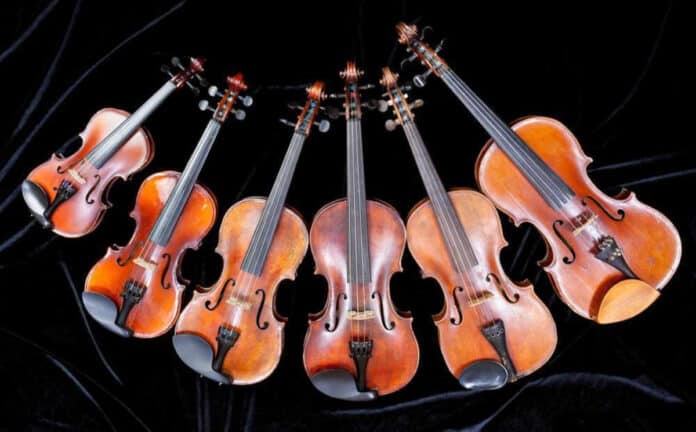
The violin is a beautiful instrument that has been around for centuries.
This versatile, melodic stringed instrument can be used in everything from classical symphonies to country music hits. But when it comes to choosing the correct violin, there are many factors to consider – and one of the most important is your skill level.
If you’re just starting on the violin or have been playing for a while but still consider yourself a beginner, this blog post is for you!
We’ll go over some key things to look for when selecting a violin appropriate for your skill level, especially when looking for violins for sale so that you can start confidently making beautiful music.
Size Matters
One of the first things you need to do before purchasing a violin is measure yourself or whoever will be using it. Violins come in different sizes depending on age, height, and arm length. So it’s good practice to know which size suits you best.
Beginners who are younger than twelve years old should use smaller violins such as 1/16 or ¾ size) while teenagers usually opt for full-size violins (also called 4/4). Adults with small hands or shorter arms may also find more comfort using fractional-sized instruments.
Material Types
Several common materials are used in producing violins, including wood types like spruce and maple- both having distinct advantages over each other among players.
Spruce:
Spruce tops create an ideal sound quality, resulting in louder volume without sacrificing tonal clarity due to naturally evens out through natural structural changes as it played over;
Maple:
Maple provides stability, interfering with less vibration frequency, thus reducing partials, allowing more robust notes compared to lighter ones produced by spruce alone.
It depends on personal preference — even professional musicians won’t necessarily agree on whether Spruce tops have greater resonance than Maple backs. However, what makes a better material choice often revolves around the price-to-quality ratio, with maple being less expensive and easier to produce over time, making it more affordable.
Sound Quality
Apart from the type of wood used, sound quality is also influenced by other factors, such as strings and the bow. As a beginner player, you may need help to discern much between two violins; differences in sound quality will be more noticeable as your playing abilities develop.
As for the strings themselves, some players prefer their tone because they are denser (thus requiring greater finger strength), while others opt for those with lighter tension, allowing for softer sounds to be produced.
On the other end of the spectrum, bows range heavily in weight, particularly at the tip, determining how fast or slow notes are produced within soft or loud volume ranges. This is based on individual techniques regarding placement against the string and distance.
Craftsmanship
The craftsmanship of a violin refers to how well it was made – from material selection and construction methods down to its finishing touches like varnish or scroll carving.
When choosing an instrument at any level, don’t forget about craftsmanship – the “complete package” encompasses each detail forming a particular production cycle. This results in changes across different brand names, depending on the original location and manufacturer’s stylizations and preferences, without sacrificing the overall suitability for the skill levels and preferences needed.
Price Ranges
Of course, while the aesthetics of an instrument are appealing, the price tag plays a paramount role in the decision-making process. Choosing an option that aligns comfortably with your financial situation is essential, avoiding overspending on something beyond your means or an unnecessary extravagance. It’s wise to carefully examine the offers available across different brands and instrument types.
Starting at around $50 to $100 has proven to provide many students with a durable option that serves them well until the time comes for an upgrade. As one advances beyond the beginner stage, transitioning to mid-range instruments becomes a practical consideration. These options offer improved features and are well-suited for students or professionals seeking better-equipped tools for high-intensity performances and consistent sound quality.
Conclusion
In conclusion, choosing the correct violin is a nuanced journey influenced by individual preferences and skill levels. Many factors, from size measurements to optimal age considerations and amplified performance capabilities, all contribute to the intricate tapestry of selecting a violin that fits your requirements and the market’s demands. Balancing these elements while considering the pros and cons is essential to making an informed decision.
Above all, remember that the pursuit of mastering the violin is a harmonious blend of technique and artistry. Equipped with the proper instrument that aligns with your needs, you can unlock the enchanting world of melodious melodies, allowing your true artistic potential to flourish over time. So, approach the journey with mindfulness, explore the options diligently, and let the resonating sounds of your violin lead you on a transformative musical voyage.








